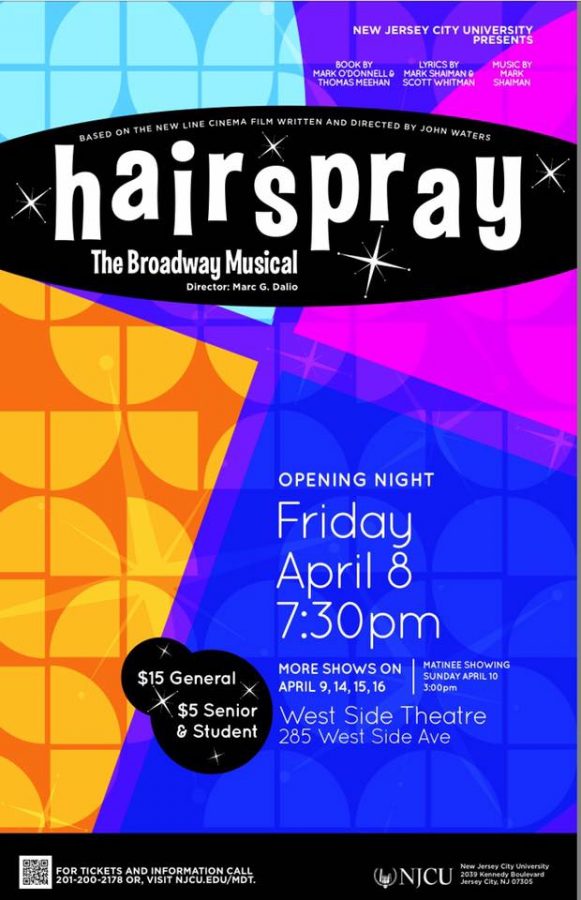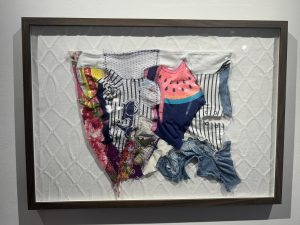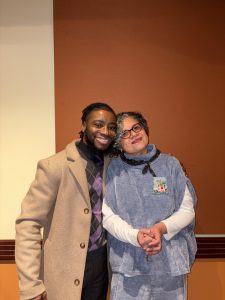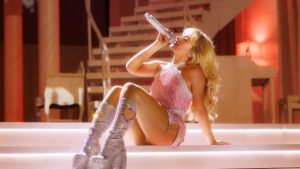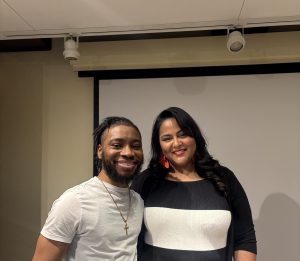Hairspray: Behind the Scenes
New Musical Opens Friday
April 5, 2016
It was 8:30 on a blustery Monday night. A gust of wind pushed me inside Karnoutsos and, windswept, I took the elevator to the basement. Before the doors opened, I could hear laughter and singing coming from the hallway outside. I stepped out of the elevator, feeling disoriented. “Nice boots,” called a man with an open smile. “Oh, are you the reporter? Come with me.”
He took me to the main dance studio where a group of students wearing athletic clothes and jazz shoes were practicing synchronized dance moves in time to the chorded music of a keyboard. Another group of students stood stage left, singing gospel-style backup vocals. At once, the director Marc Dalio, introduced himself. He took me to his office where we spoke about the casting and rehearsal process and what goes into putting on a production like “Hairspray.”
“I pick each production based on the current needs of the majors,” Dalio said. “I chose “Hairspray” because it embraces infectious, energetic dance. I wanted them to move, and I wanted them to infect the audience with the urge to join them. Of the 25 musical numbers, 20 of them involve high octane movement.”
Set in 1960s Baltimore, “Hairspray” follows the story of 15-year-old, dance-loving Tracy Turnbald who rises to instant stardom when she auditions for a spot on the “Corny Collins Show,” and against all odds, wins. “Tracy is bullied because she is heavier,” said Emily Hand who plays Tracy in NJCU’s production. “In a way, she’s a rebel because she doesn’t let it get her down and she just wants to have fun.”
But Tracy’s rebellion goes further than refusing to accept body shaming. The “Corny Collins Show” only allows “colored” dancers a spot once a month. Tracy’s first day on the show she questions this practice by proposing integration. “She’s naive and doesn’t understand why everybody can’t just get along,” Emily said.
With all the vibrancy of the 1960s, the show tackles some of the era’s darker topics. “The irony is that most companies use this show as an excuse to be more diverse,” Dalio said. “Due to the already diverse nature of NJCU, typically I cast colorblind, but because this show is about race relations, it forced me to be more conservative in my casting choices by having defined ‘white’ characters and ‘black’ characters.” At a time where discussions on race are taking center stage, Dalio’s decision to do “Hairspray” comes at the perfect moment to allow students the opportunity to add to the conversation by exploring this topic through the emotionally expressive forms of song and dance.
The cast started the rehearsal process back in February, spending countless hours learning each musical number and the corresponding choreography with painstaking precision. I was impressed with the high level of talent present in the cast, and with their individual and collective passion and dedication to perfecting every scene. “This show is lights on all the time,” said dance captain Catrina Stevens. This was evident as I watched the cast give it their all, even though it was 8:30 on a Monday evening during a rehearsal. They seemed captured within a kind of group cohesion that only comes from working collectively for so long on a project that everyone cares so deeply about.
This comes down to the good leadership from Dalio, the director, and Brian Rivell, the choreographer. “There are 35 majors,” Dalio said. “No matter in what role they are cast, whether they are the lead, or manning the second spotlight, they are important, they are at rehearsal, they are involved.” He obviously adheres to the saying “There are no small parts, only small actors.”
The show opens April 8 and based upon the focus and effervescent energy they employed that night in rehearsal, it will no doubt be the culmination of the best talent and teamwork NJCU has to offer.
“Hairspray” opens Friday, April 8 at 7:30 p.m. at the West Side Theater. Additional shows are on April 9, 14 and 16. There is a matinee on Sunday, April 10 at 3 p.m.



